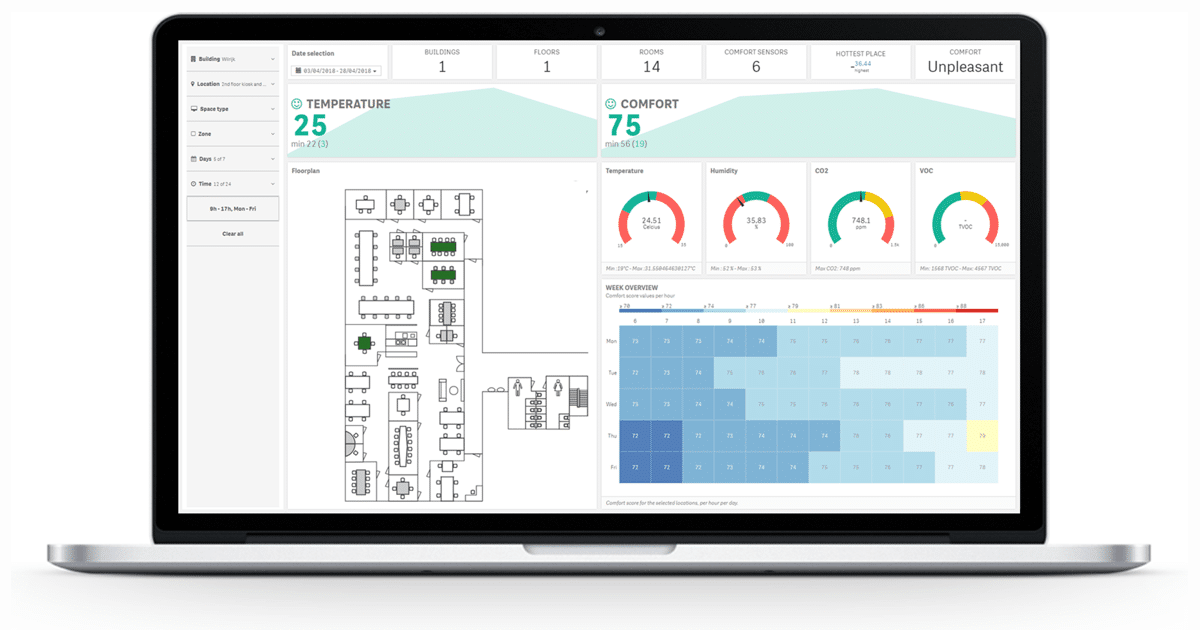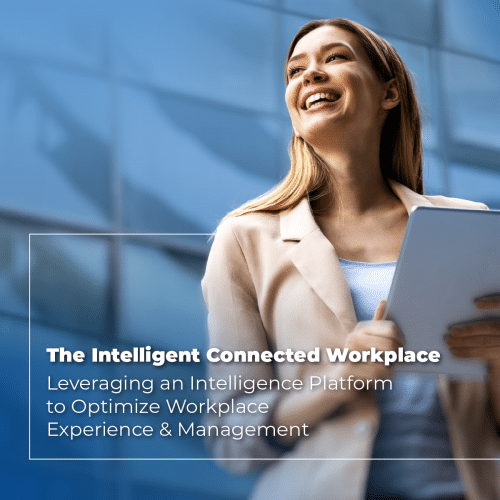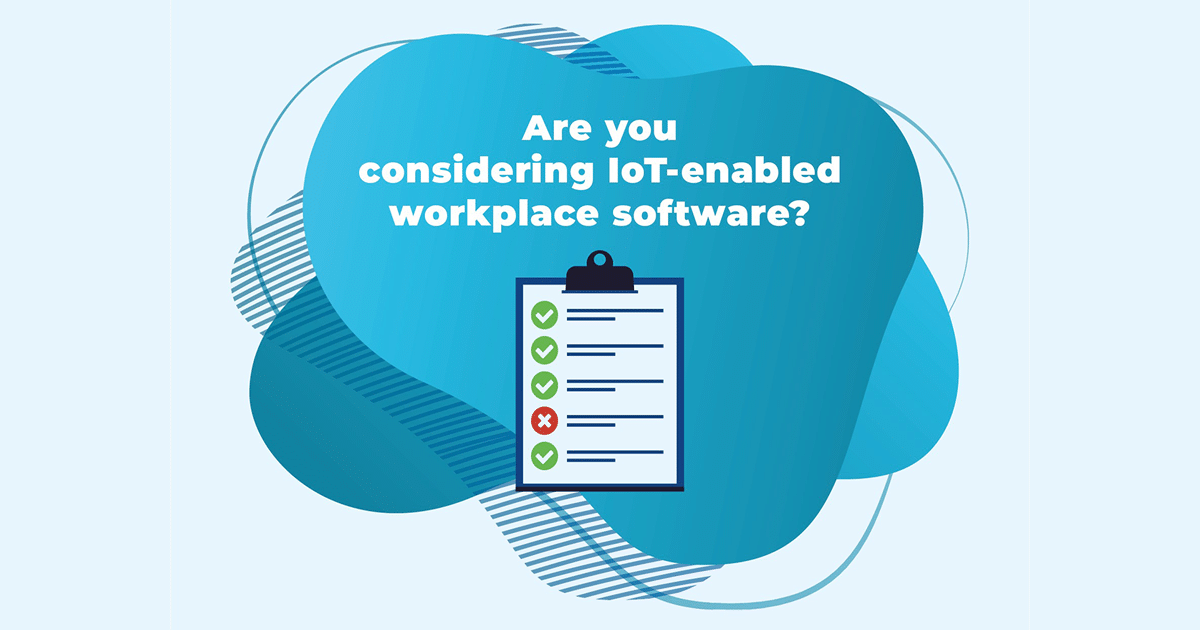In this blog article, we’ll be looking at how IoT sensor technology, and the data derived from it, can optimize the hybrid workplace experience.
Let’s start by looking at 3 key workplace trends that have been accelerated by the pandemic.
1. The rise of hybrid work
The post-pandemic outcome is definitely hybrid, according to McKinsey. Hybrid work means that part of the workforce works outside of the traditional office for part of the time.
This trend is confirmed by data from Leesman, a company that captures employee sentiments on workplace effectivity and benchmarks workplace performance against the world’s largest database of its kind. In its most recent data debrief – which includes WFH data – Leesman reports that 47% of employees would like to work 2-3 days per week in their main workplace post-COVID-19 (37% 0-1 days; 16% 4-5 days).
Other surveys point in the same direction. CBRE’s 2021 Occupier Sentiment Survey (conducted in spring 2021) concludes that hybrid work has become a stronger guiding principle for companies across the globe. This is, even more, the case for large multinational corporations, especially in the financial services and technology sectors.
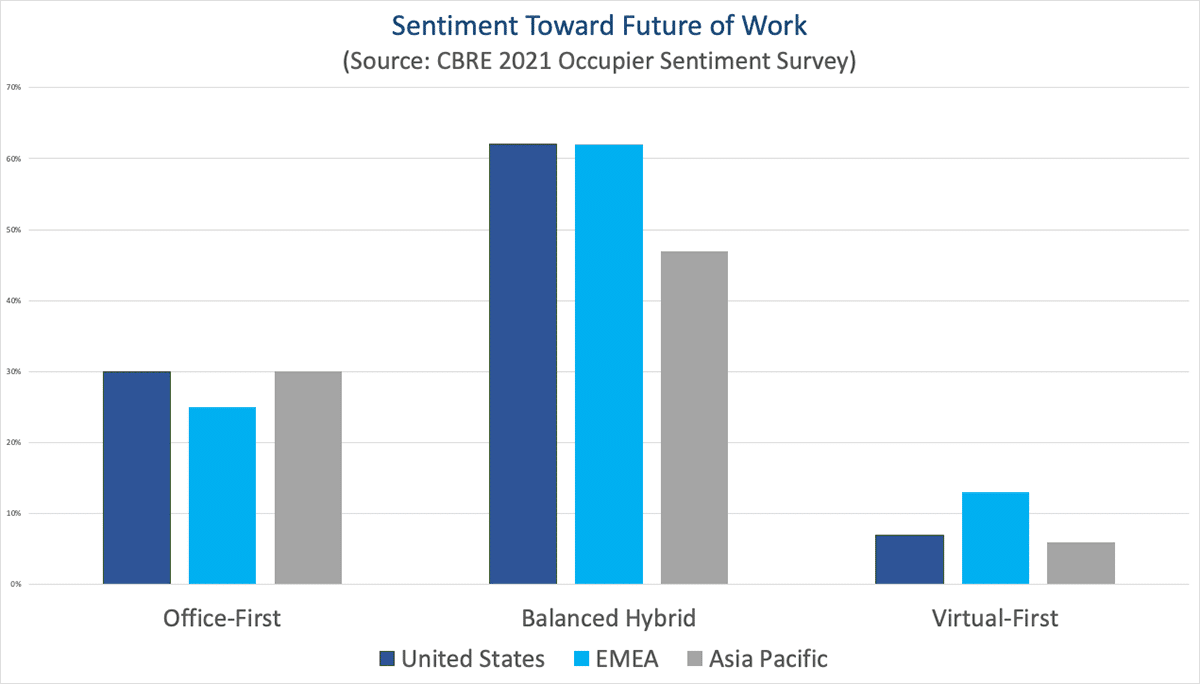
2. Aligning space with purpose
It is anticipated that the post-pandemic hybrid workplace will be geared more around collaboration, engagement, and culture. This makes sense intuitively. After the pandemic hit, offices emptied almost overnight. We navigated the mass shift to remote working using collaboration tools like Zoom or Teams to connect with coworkers. But seeing someone on video is simply not the same as in-person collaboration. During government-mandated home working, employees started to crave the social interaction and relationship-building opportunities that were an inherent part of a physical workplace. Extrapolating from this, many envision the post-pandemic office as a social hub — the place where people go to meet, socialize, and work together.
Nevertheless, it would be an oversimplification to state that the post-pandemic workplace will only be about collaboration. Leesman data shows that individual, focused work remains the number 1 need for remote-leaning as well as office-leaning knowledge workers. To ensure a great hybrid workplace experience that supports everyone’s productivity, hybrid offices, therefore, will need to provide adequate spaces for team collaboration as well as deep work.
3. More flexibility and choice
In a hybrid model with a combination of remote and on-site working, assigned seating obviously leads to a lot of vacant seats and wasted space. With flexible seating arrangements (office hoteling or hot-desking), workplace managers can reduce the number of desks and the freed-up space can be eliminated, sublet, or repurposed for collaboration. Choice-based workplaces or “free address” environments are, therefore, on the rise. Such a functional free-address office does away with assigned desks and provides instead a variety of spaces, including hot desks, meeting and huddle rooms, informal spaces, phone booths, and “heads down” spaces for focused work. During a typical workday, employees can move from one space to the other, depending on their preferences, energy level, and the work they want to accomplish.
Business objectives of a great hybrid workplace experience
A positive employee experience is not a nice-to-have; it’s an essential condition for companies to compete effectively. This is particularly pronounced in knowledge industries, where creativity, innovation, and intellectual engagement are huge drivers of value.
The physical/digital workplace plays an important role in the overall employee experience and productivity. Its objective is to take away barriers to productivity and to create a high-performing, agile environment in which employees can do their best work. Technology is the glue for this.
The importance of technology for successful hybrid working
Smart workplace technologies are virtually essential to making flexible workplace concepts work smoothly. For example, a sensor-based reservation system for workstations is essential in a workplace in which teams are frequently changed, employees regularly switch between different work areas, and the seat-to-employee ratio is low. Also, the closer you get to optimal or peak usage of meeting rooms on busy office days, the more you need digital tools that provide real-time information on actual occupancy.
Read more about hybrid workplace solutions.
A responsive workplace, enriched with sensor data
Organizations that implement an Integrated Workplace Management System (IWMS) that integrates with the IoT have a head start over others. By capturing live data from sensors, such a system can give employees visibility into real-time space availability across multiple floors or sites, through a mobile app. An example is Spacewell’s Workplace App that employees can use on their own smartphones or via other user-friendly touchpoints. App functionality makes navigating a flexible workplace much easier. Search tools help users understand which spaces are available, what features exist in each space, what the ambient conditions are, and how to navigate to those spaces. Booking functionality allows users to make sure that they have access to the space in the moment or to plan ahead for their day. The integration with IWMS also makes it possible for users to request services and for service providers to deliver services when they are needed.
From the real estate manager’s perspective, such workplace technologies provide essential information about what spaces employees actually use so that they can optimize the space mix. Perhaps a building’s focus rooms are booked back-to-back all day while large conference rooms sit empty, suggesting that there is a mismatch in the types of spaces being provided and what is needed. Or maybe employees avoid the space because it is too cold, too hot, or too stuffy.
Three key hybrid workplace experience benefits of leveraging the IoT
1 – Enhancing workplace scheduling with usage data in real-time
Live sensor data on digital floor plans make the workplace fully transparent for employees. Employees have access to this data in real time on their smartphones and other digital touchpoints. So that they can easily find and book suitable spaces with the right amenities and ambient conditions. Janitorial workers also get visual instructions on mobile devices, showing them where to go and what tasks to perform. Priorities can be quickly updated, based on user requests or sensor triggers. The result: building users are happier and job satisfaction increases.
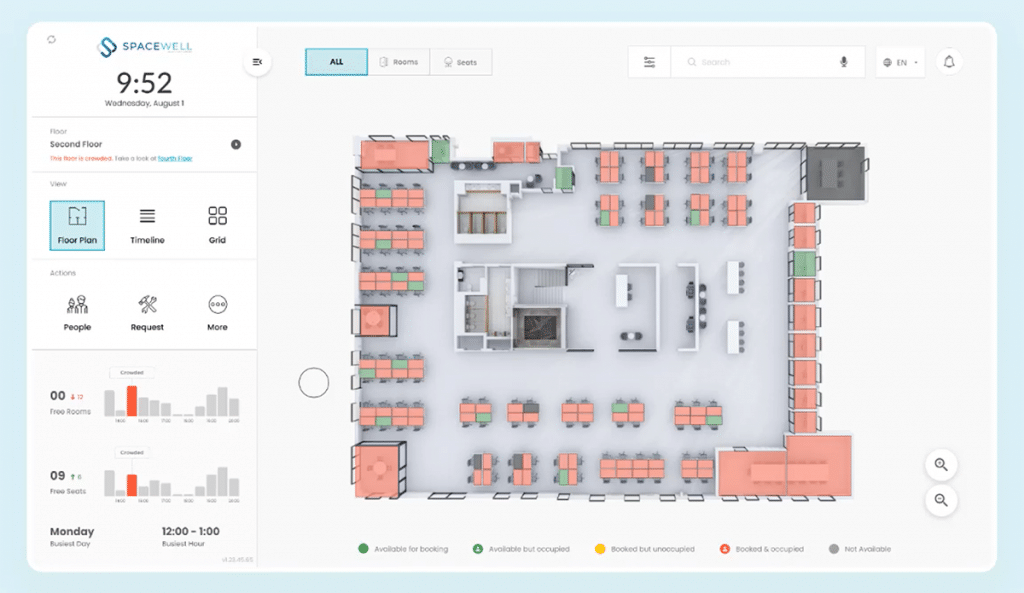
2 – Leveraging utilization data for long-term planning
Beyond its real-time benefit, space utilization data from sensors also provides essential information for long-term planning. It is more accurate than information from traditional reservation systems and, therefore, more reliable as a basis for getting the office space mix right or determining the ideal employee-to-desk ratio.
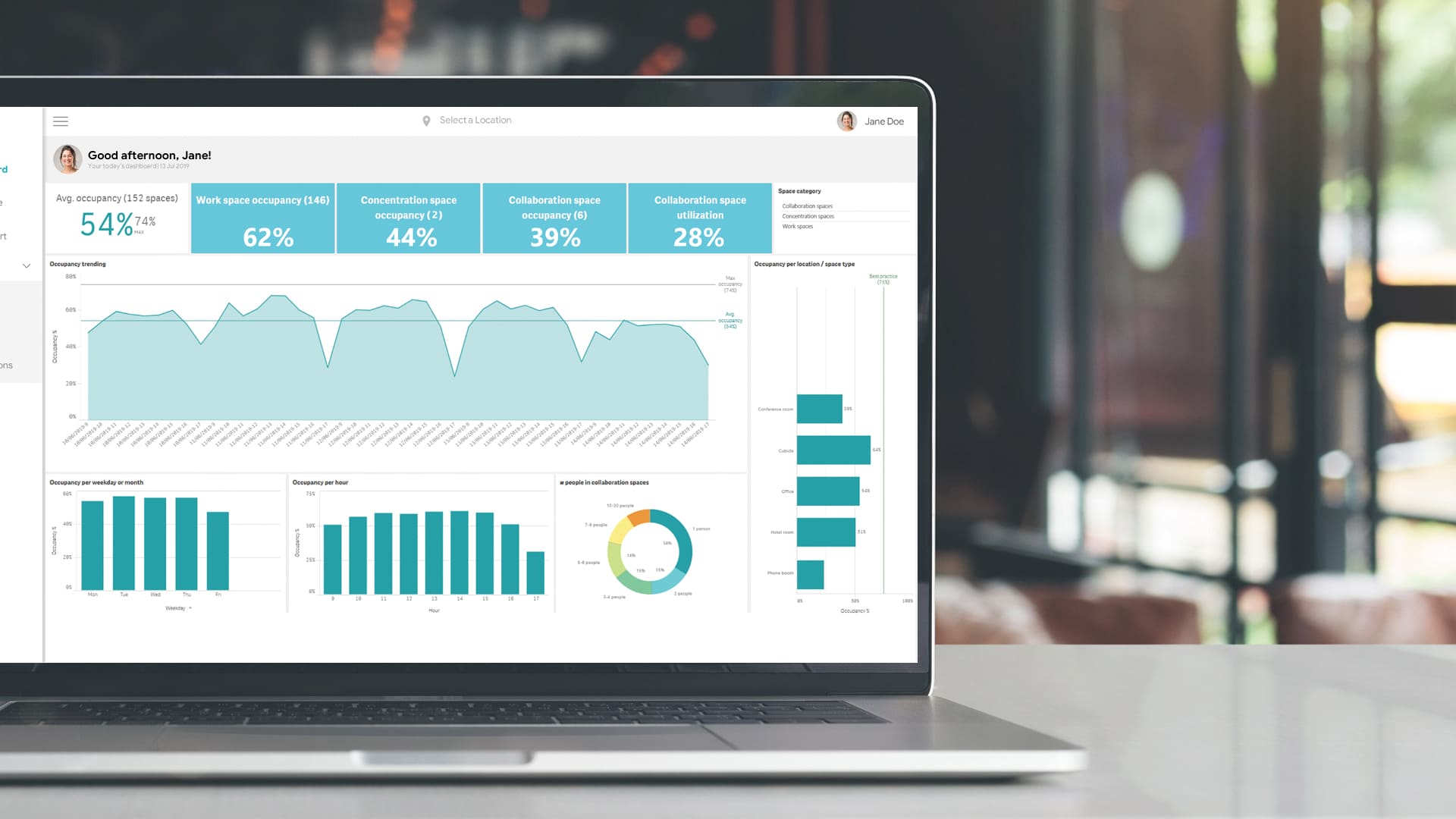
3 – Improving employee well-being with sensor data
Many sources of indoor air pollution can affect human health and cognition. Studies show that in offices across the world, poor ventilation, CO2 buildup, and particulates (which carry VOCs) conspire to significantly impair cognitive function. The quality of the indoor air we breathe may also influence our mood and mental health. Comfort and air quality sensors in the workplace can monitor many aspects of environmental quality, from volatile organic compounds (VOCs) to CO2, temperature, humidity, and radon at a localized level.
